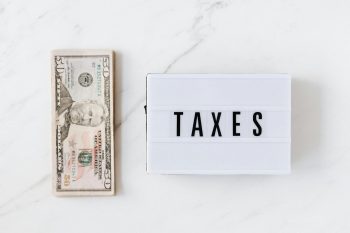One of the most consistent expenses in any household budget is grocery shopping, but lately, it’s gotten more expensive. In 2023, the average American household spent over $8,100 on food at home, or 7.4% of its income. But it’s not just inflation that’s driving prices up. Global trade tensions, shifting economies, and rising tariffs quietly affect prices.
A recent SmartAsset study shows the impact varies by region, but one trend is clear: protein prices are rising faster than overall inflation, hurting many. Pew Research reports that nearly 70% of Americans find it increasingly difficult to afford healthy food. However, those with fixed incomes or lower incomes were most affected.
Whether we pay attention to trade policy or not, when checkout totals spike, we all feel the effects. Because of this, tariff-aware grocery shopping has become a modern necessity. As such, this post will help you save money without compromising on quality or nutrition, regardless of whether you’re a retiree, a parent on a budget, or just someone trying to eat well without overspending.
Table of Contents
ToggleUnderstanding How Tariffs Affect Grocery Prices
For those unfamiliar, a tariff is a tax imposed on imported goods. Governments often raise tariffs on food items or key agricultural products, which trickle down to consumers. For example, a tariff on imported cheese or produce from a specific country can increase the shelf price of those items.
While tariffs can help local producers by discouraging imports, they can also reduce consumer choice and cause inflation in some categories. Due to this, being aware of which items are affected and adjusting your buying habits can save you a lot of money.
How to Save Money on Your Groceries, Despite Tariffs
Buy local and seasonal.
When avoiding tariff-related price increases, purchasing local, in-season produce is the best option. As any frugal homemaker knows, local fruits, vegetables, dairy products, and meats are not subject to import tariffs and are often fresher since they have been transported less.
Tips:
- For direct-from-source savings, visit your local farmers’ market.
- You should choose grocery stores that carry local goods (often marked with “locally sourced”).
- Whenever possible, plan meals around what’s in season. This is cheaper, tastes better, and supports local agriculture.
Example: Instead of buying imported berries in winter (often from South America and subject to tariffs), opt for domestic citrus fruits, which are in peak season then.
Take a look at the origin label.
You can use country of origin labels to your advantage. How? Most products in the U.S. and other major markets must display their country of origin. As such, it’s easier to avoid products imported from countries with higher tariffs if you know which countries have higher tariffs.
Quick wins:
- You may want to skip specialty cheeses or wines from countries that have recently imposed tariffs.
- Whenever possible, choose local produce and pantry staples.
- When buying fish, always check whether it’s wild-caught domestically or imported.
Stock up on non-perishable essentials.
You may notice a sudden increase in canned tomatoes, coffee, pasta, or rice prices due to a tariff or import disruption. If prices drop or a deal arises, consider buying in bulk, especially if the item has a long shelf life.
Smart stockpiling ideas:
- Beans — dried or canned
- Pasta and noodles
- Canned vegetables and tomatoes
- Coffee and tea
- Shelf-stable dairy, like powdered milk or evaporated milk
At the same time, you should be strategic. In other words, don’t hoard perishables or goods you won’t use. Building a smart buffer is the goal, not creating clutter.
Compare private labels vs. imported brands.
Large chains often domestically source private-label (store-brand) products or negotiate in bulk, so they are better protected from tariffs. These brands are often more affordable than their name-brand counterparts, especially those imported from countries subject to tariffs.
For example, name-brand olive oils imported from Europe may cost significantly more after tariffs are applied. You can buy a store-brand version from California or another tariff-free source for less, though.
Also, remember that private label does not necessarily mean low quality. Often, they are made by the same companies that make major brands.
Join a grocery loyalty program or subscription club.
Almost every grocery chain offers loyalty cards with targeted discounts and weekly deals. These programs allow stores to control the flow of inventory, especially in cases of tariff-driven price fluctuations.
Furthermore, subscription boxes that deliver domestic products directly to your door (such as produce boxes or meat deliveries) can prevent you from paying tariffs on imported products.
Because most of these services are subscription-based, you won’t need to worry about rising costs as tariffs rise.
Get creative with substitutes.
Don’t be afraid to substitute alternative ingredients for a staple item if import costs suddenly exceed your budget. These ingredients will provide similar flavor, nutrition, and utility.
Swap ideas:
- Quinoa (often imported from South America) → Try farro, bulgur, or barley (often grown domestically)
- Imported cheeses → Opt for locally made alternatives or DIY your own spreads
- Avocados from Mexico (when affected by tariffs) → Replace with local zucchini or hummus-based dips
The more flexible you are with recipes and the more open you are to substitutions, the less you will spend on food and the more versatile you can become.
Follow trade news (without getting overwhelmed).
Even though you don’t need to obsess over every global tariff announcement, you should check the headlines or set up a Google Alert for updates on food-related trade. You can pinpoint a potential deal in advance by anticipating price spikes or tariffs being lifted.
Example: Before tariffs rise on coffee, you might stock up.
Meal plan with cost in mind.
In the face of unexpected inflation caused by tariffs, meal planning becomes even more effective. You should choose affordable, whole ingredients that are not subject to import tariffs, such as:
- Grains: Wheat, corn, oats, rice — mainly if they are grown locally.
- Vegetables: Generally available and readily grown in many areas are potatoes, carrots, onions, lettuce, and tomatoes.
- Fruits: Many domestically grown apples, peaches, and berries, depending on the season and region.
- Legumes: Beans and lentils are common, affordable, and often grown locally.
- Meat & poultry: Domestically produced beef, chicken, and pork.
- Eggs: An essential component of many dishes, often produced locally.
- Dairy: Generally, dairy products such as milk, cheese, and yogurt are produced domestically.
- Nuts: Pecans and walnuts are grown domestically, but other nuts may be affected by trade barriers
Also, remember overlapping ingredients when planning meals, so nothing is wasted.
Freeze, preserve, and DIY.
Whenever you come across tariff-free goods on sale, especially local produce, buy more than you need and preserve them.
Ideas:
- Chopped fruits and vegetables can be frozen.
- Make batches of sauces or soups and freeze them.
- If you’re adventurous, try home canning.
- You can make your own spice blends, granola, and snacks with bulk ingredients.
Doing this can save money and control what you eat.
Final Thought: Smart Grocery Shopping is a Financial Skill
As trade policies fluctuate and supply chains become more global, grocery shopping has become more strategic. Tariff-friendly shopping, however, can free up cash for your household, reduce waste, and give you a stronger financial foundation.
Ultimately, with the correct information, mindful shopping, and new habits, you can beat the system and save money on your groceries.
FAQs
What are tariffs, and how do they affect grocery prices?
Generally, tariffs are taxes imposed by a government on imported goods. Companies must increase prices when tariffs are placed on imported food items. These increased costs are often passed on to consumers through higher grocery prices. The price will increase depending on the tariff rate and the specific product.
Which food products are most likely to be affected by tariffs?
Tariffs tend to increase the price of primarily imported foods or those that contain significant amounts of imported ingredients. According to recent tariff announcements, prices could increase in the following categories;
- Tropical produce, such as bananas, pineapples, and coconuts.
- Fresh and frozen seafood, primarily fish and shrimp.
- Processed coffee and coffee beans.
- Olive oil, especially from regions facing tariffs.
- Chocolate products include cocoa beans, paste, butter, powder, and finished chocolate products.
- Cashews, pecans, macadamia nuts — depending on origin.
- Tea and spices, especially if a tariff war breaks out.
- Depending on the country of origin, imported cheeses and alcohols are available.
- Avocados, tomatoes, and berries, especially those from countries with tariffs.
Are there specific stores or programs that help avoid tariff-related price increases?
Some grocery chains may be more focused on domestic sourcing, which may help mitigate the impact of tariffs on their prices. It is also possible to avoid tariffs on produce and other locally made goods by shopping at farmers’ markets and directly from local producers.
Will tariffs cause certain products to disappear from shelves?
Some imported goods could see fewer options if the added cost makes them less viable for importers or the exporting country finds other markets if significant tariffs are imposed.
How can I stay informed about which products are affected by tariffs?
Be sure to follow news reports and announcements regarding government policies and tariffs. Additionally, consumer advocacy groups and industry publications may provide updates on what it might mean for grocery prices.
Image Credit: Kampus Production; Pexels
















